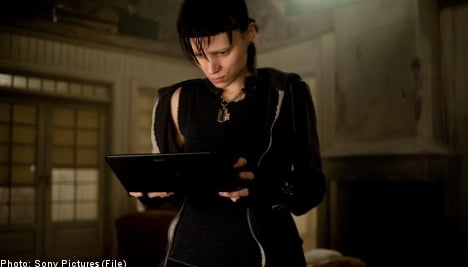The enormous worldwide popularity of Swedish author Stieg Larsson’s Millennium trilogy and the movie ”The Girl with The Dragon Tattoo”, starring Daniel Craig and Rooney Mara, have trained the world’s eyes on Sweden once again.
The attention may have brought plenty of tourist kronor, but within the country itself it has also produced an unprecedented wave of introspection. Just how representative the picture of Sweden and Stockholm in particular is, has caused much debate on home and foreign soil.
”You can’t really portray a true picture of a country or culture. The best you can do is construct one from its history, literature, religion and culture, these kind of factors,” Jonas Engman, Stockholm University lecturer and ethnologist tells The Local.
Beginning in the 1800s, a conscious effort was made made to construct and show off the so called ”Swedish model, ” a concept which gathered pace during the 1930s and after World War 2, according to Engman.
”Since the Second World War, we have made strong efforts to form something, not just for ourselves, but to send a message overseas that ours is the best country, the best social system and the most tolerant society. In fact, we have considered the model so good we have tried to export it to places like Africa and Vietnam among others,” says Engman.
”It can be seen as a kind of colonisation, that has been gradually developed over time at specific flash points, like the Vietnam War, The Cold War etc. you could say ‘Bad Russia’ versus ‘Good Sweden,’”he adds.
To a great extent, this method has been successful. In 2007, Sweden was rated best practising democracy by The Economist, least corrupt nation by Transparency International, most equal in gender relations by the World Economic Forum, and most generous donor of overseas development aid by the OECD.
Meanwhile, Engman points out, during the 1960s and 70s, Swedes were brought up to be proud of their country and its culture. For people of that generation, it is this ideology and belief system that is now under threat as they are plunged into questioning mode themselves.
Larsson’s Millennium books, like fellow Swede Henning Mankell’s Wallander thrillers, uncover unpleasant undercurrents beneath Sweden’s tranquil social order. In Mikael Blomkvist and Kurt Wallander’s Sweden, racism is rife, violence against women is commonplace, and high-ranking lawyers and doctors collude in child sex trafficking. It is hardly the stuff of tourist guides.
According to his creator, Wallander was born out of a need to talk about the xenophobia and racism he saw in Sweden in the late 1980s, rather than create a character, because, said Mankell, the issues were always more important than the people involved.
In a similar vein, The Millennium Trilogy documents multiple murders, neo-fascism, state-sanctioned violent sexual abuse, paedophilia and rape. Larsson, like Mankell, pulls apart the stereotype of perfectly educated, socially democratic tolerant Swedes.
While the dark side of Sweden shown in Larsson and Mankell’s novels is far from the experiences of most Swedes, they tap into a natural human instinct that evil can lurk in unexpected places.
”They are classic cases of dramatology, showing another side of a society gripped by something dark and frightening, similar if you like to the movie Jaws,” says Engman.
Perhaps an even better analogy is the series of submarine sightings in Swedish waters during the 80s. Much of the media believed they were Soviet vessels, while others suspected they belonged to Nato. Here you have a literal case of something untoward lying beneath the smooth surface and disturbing the normal sense of calm.
Meawnhile, had the plotlines surrounding the murder of Olof Palme and the downfall of Göran Lindberg, former chief of police of Uppsala come from a Swedish thriller novel, the chance are the writer would be accused of stretching the boundaries of realism way too far.
The news of Lindberg’s secret life certainly rocked Sweden. The revelation that such a senior police officer and high-profile advocate of women’s rights was, in reality, a serial user and abuser of prostitutes caused widespread astonishment and chipped further at the perfect model of society.
The consequences of this introspection, according to Engman, has also led to the rise of a far right wing that has become ever more threatening in recent years.
”Cultural ambivalence has been questioned for first time”, he says, ”And for people questioning themselves, as well as society and its values, it has been a painful awakening.”
Stockholm meanwhile, is a metaphor for Swedish society in the book and the film. For personal and business reasons, Stockholmers have long cultivated the idea of the ”perfect city,” of sparkling waters, and healthy people basking under cloudless skies in the ”Venice of the North”, the utopian vision of ”Folkhemmet”, the vision of a welfare state that would literally be the ‘home of the people’.
So while the Millennium books and films are fiction, pure and simple, they tap into a sense of anxiety that the Swedish utopia was never more than a vision, that the dark side of human nature was never far from the surface.
Article sponsored by Stockholm University



 Please whitelist us to continue reading.
Please whitelist us to continue reading.
Member comments